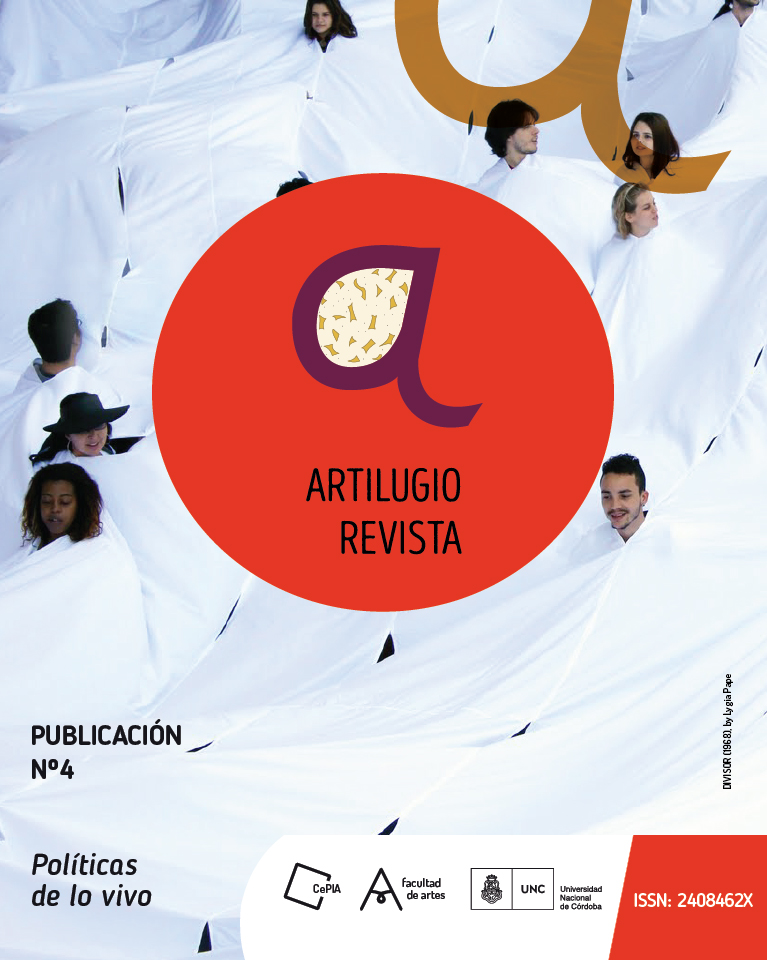Regal Serialities. Tv Series And Scenographies Of Female Body.
DOI:
https://doi.org/10.55443/artilugio.n4.2018.21067Keywords:
tv series, cultural semiotics, translation, corporeality, Eva PerónAbstract
The recent rights acquisition of the novel Santa Evita (1995) by FOX inaugurates a productive scenario to attend to certain displacement of senses at a cross-cultural level. In terms of a cultural semiotics, translation appears as a privileged category to evaluate these spaces of active dialogue that show the dynamism of art texts and the way in which they become semiotic customs for an adaptive elaboration. From this perspective, the complex text of Eloy Martínez offers multiple angles that, assembled in his narrative, translate the myth of Evita from a problematic that also seems to be a reiterative of North American TV series: the political construction of the female body. Our objective is to propose a provisional note to think about the semiotic functions that cross the distances between physical body and political body, around an "exceptional" female subject in recent narratives as House of Cards (2013) and The Crown (2016). Our hypothesis holds that these aesthetic routes seem to be paving the way for a new international translation of Eva Perón. In this sense, Santa Evita would be drawing symbolic lines that fit an idea of corporality and scenography of power that the contemporary political-aesthetic order puts into question.
Downloads
References
Gaby Allrath y otros, Narrative Strategies in Television Series (New York: Palgrave Macmillan, 2005).
Pampa Arán, Interpelaciones. Hacia una teoría crítica de las escrituras sobre dictadura y memoria (Córdoba: Ferreyra Editor, 2005).
Mijaíl Bajtín, La cultura popular en la Edad Media y el Renacimiento (Madrid: Alianza Editorial, 1984).
Emilio Bernini, “Las series de televisión y lo cinematográfico”, Kilómetro 111. Series y cine contemporáneo, 10 (mayo de 2012): 25-40.
Jorge Carrión, Teleshakespeare. Las series en serio (Buenos Aires: Interzona, 2014).
Tomás Eloy Martínez, Santa Evita (Buenos Aires: Sudamericana, 2007).
Ariel Gómez Ponce, “Vestidas para matar. De la ferocidad animal a la fatalidad femenina serial”, Revista Estudios, 34 (julio-diciembre de 2015): 245-258.
Ariel Gómez Ponce, Depredadores. Fronteras de lo humano y series de TV (Córdoba: Babel, 2017).
Elizabeth Grosz, Volatile Bodies. Toward a Corporeal Feminism (Bloomington: Indiana University Press, 1994).
Michael Hammon y Lucy Mazdon, The Contemporary Television Series (Edimburgo: Edinburgh University Press, 2005).
Sarah Kozloff, Invisible Storytellers: Voice-Over Narration in American Fiction Film (Berkeley: University of California Press, 1998).
Iuri Lotman, Estética y semiótica del cine (Barcelona: Gustavo Gili, 1979).
Iuri Lotman, “La memoria a la luz de la culturología”, en La Semiosfera I (Madrid: Ediciones Frónesis Cátedra, 1996), 157-161.
Iuri Lotman, “La retórica”, en La Semiosfera I (Madrid: Ediciones Frónesis Cátedra, 1996), 118-142.
Iuri Lotman, “El origen del sujet a la luz de la tipología”, en La Semiosfera II (Madrid: Ediciones Frónesis Cátedra, 1998), 185-212.
Iuri Lotman, Cultura y explosión. Lo previsible y lo imprevisible en los procesos de cambio social (Barcelona: Gedisa, 1999).
Iuri Lotman, “El lugar del arte cinematográfico en el mecanismo de la cultura”, en La Semiosfera III (Madrid: Ediciones Frónesis Cátedra, 2000), 123-137.
Emanuel Respigui, “La TV argentina también busca historias en la biblioteca”, Página 12 (29 de marzo de 2017), consultado el 15 de julio de 2017 en https://www.pagina12.com.ar/28512-la-tv-argentina-tambien-busca-historias-en-la-biblioteca
Omar Rincón, Narrativas mediáticas (Barcelona: Gedisa, 2006).
Beatriz Sarlo, La pasión y la excepción. Eva, Borges y el asesinato de Aramburu (Buenos Aires: Siglo XXI, 2003).
Silvia Schawarzböck, “Historia de un error. La legitimación estética de las series”, Kilómetro 111. Series y cine contemporáneo, 10 (mayo de 2012): 7-24





































